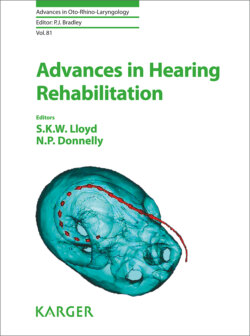Читать книгу Advances in Hearing Rehabilitation - Группа авторов - Страница 25
На сайте Литреса книга снята с продажи.
Limitations of OCT and HFUS
ОглавлениеMost ears with pathology show anatomical abnormalities that can limit the use of OCT or HFUS. While pathologies such as otosclerosis present with relatively normal TMs, and can be imaged with OCT, other pathologies and surgical interventions such as cartilage tympanoplasty, often thicken the eardrum, impeding light penetration and making OCT imaging impossible. In such cases, HFUS offers a promising alternative owing to its superior soft-tissue penetration. HFUS, however, requires that the middle ear either have saline, serous effusion, or tissue (e.g., granulation) in it.
A common limitation to both OCT and HFUS is their inability to image through bone. Pathologies of interest, such as cholesteatoma, are often hidden in the epitympanum by bone and so cannot be visualized easily with these modalities as currently implemented. However, it may be possible to build side-looking probes that might be able to look at these areas.
